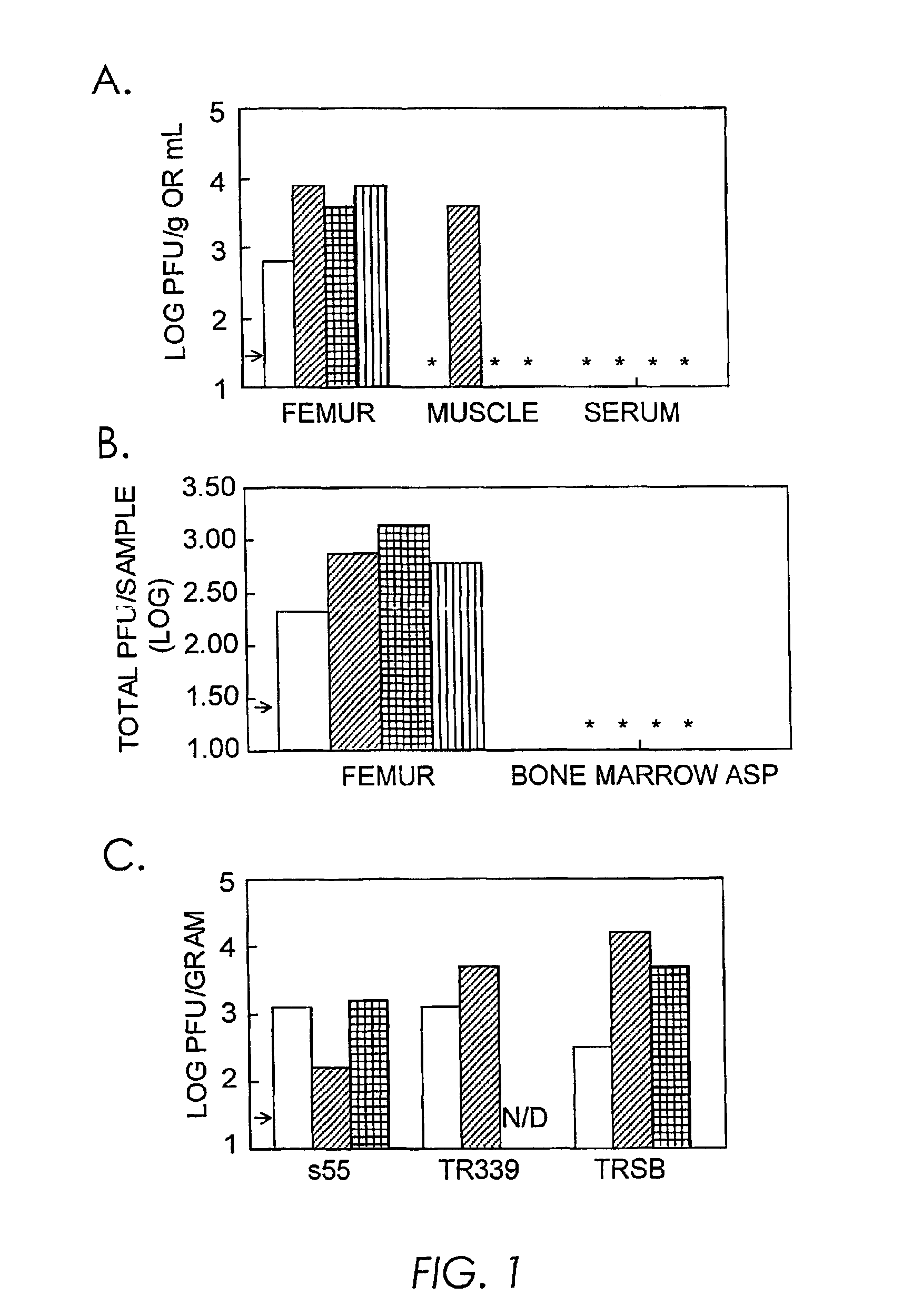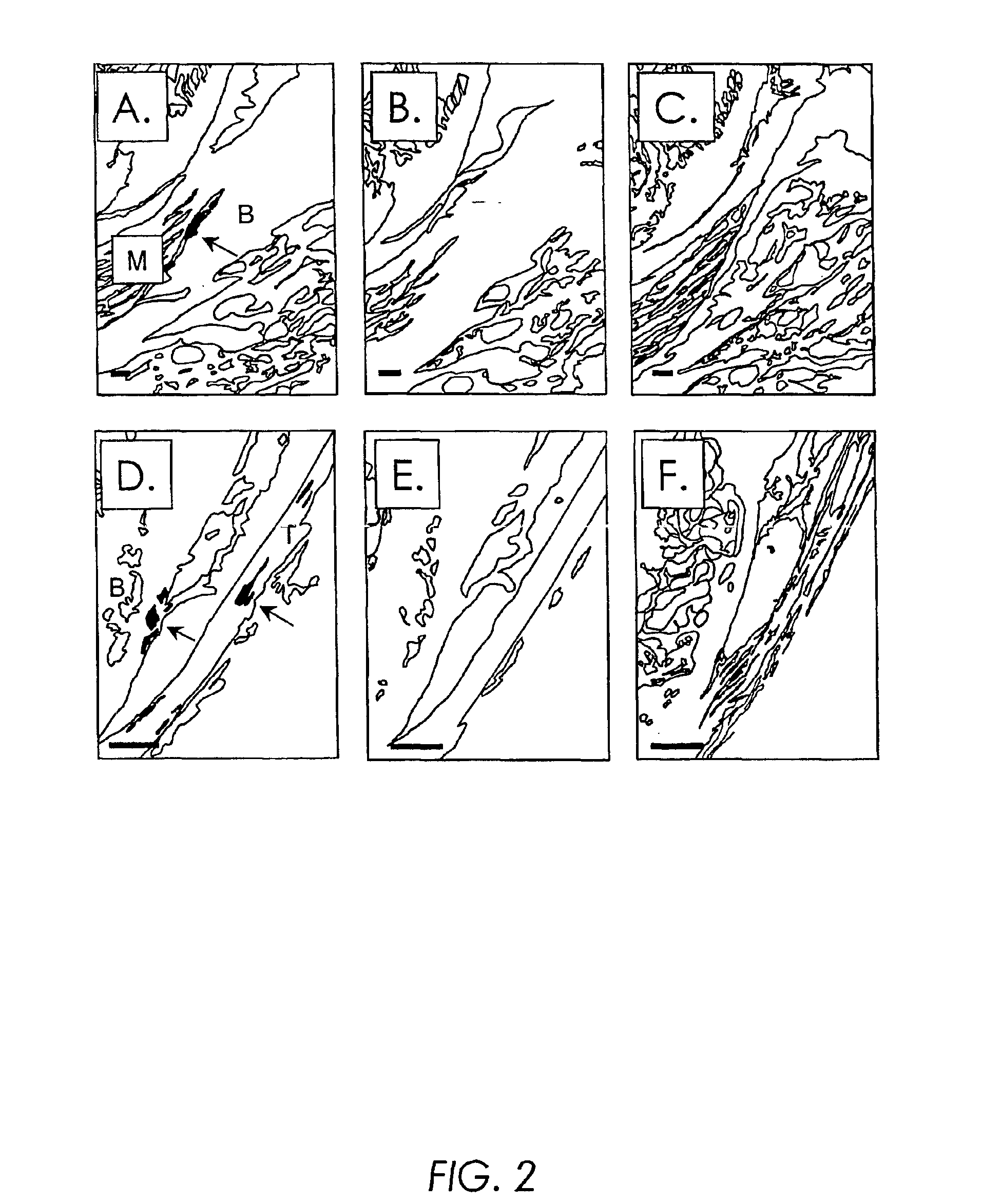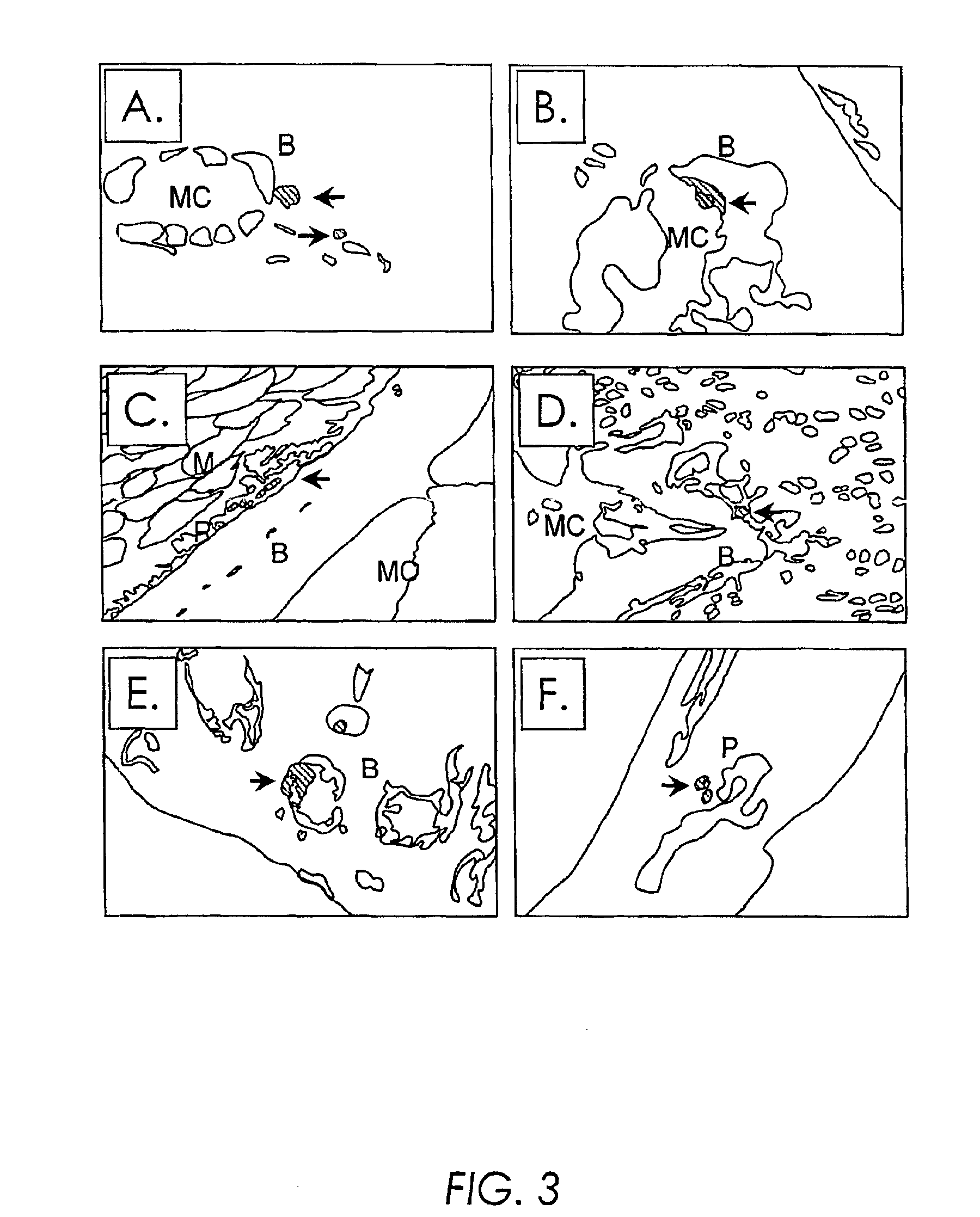Vectors derived from South African Arbovirus No. 86
a technology of arbovirus and vector, which is applied in the field of alphavirus vectors, can solve the problems of limited usefulness as a model, hampered understanding of the mechanisms leading to alphavirus mediated arthritis/arthralgia in humans, and rapid death of diseases, and achieves enhanced expression of heterologous nucleotide sequences
- Summary
- Abstract
- Description
- Claims
- Application Information
AI Technical Summary
Benefits of technology
Problems solved by technology
Method used
Image
Examples
example 1
[0211]Six week old female CD-1 mice (Charles River Breeding Laboratories; Raleigh, N.C.) were infected intravenously (iv) with 103 pfu of virus derived from the wild-type S.A.AR86 molecular clone ps55 (Simpson et al., (1996) Virol. 222:464). Three days post infection, mice were sacrificed and serum was harvested, while the quadriceps muscles, and the femurs (including the knee and hip joints) were removed and placed in PBS supplemented with 1% donor calf serum (Gibco BRL, Grand Island, N.Y.). Muscle tissue was frozen and thawed before homogenization using a mortar and pestle (Kontes Glass Company; Vineland, N.J.), while calcified tissue was crushed using sterile pliers before freeze thaw. The tissue homogenate was then clarified by centrifugation and assayed for infectious virus by plaque assay on BHK-21 cells (ATCC CRL 8544) as previously described (Ryman et al., (2000) J. Virol. 74:3366). Virus was consistently isolated from the femurs of infected animals (FIG. 1A). Infectious vir...
example 2
[0212]Additional experiments were performed to determine whether bone marrow or calcified / fibroblast connective tissue was the site of virus replication within the hind limb. Adult female CD-1 mice were infected iv with 103 pfu of virus derived from the S.A.AR86 molecular clone ps51, which differs from the wild-type ps55 clone by a single coding change (nsP1 538 Thr to Ile). Three days post infection, the femurs, including the hip and knee joints, were removed and the bone marrow was aspirated and titrated for infectious virus by plaque assay. The remaining tissue, including the diaphysis (barrel) of the femur and the knee and hip joints, was also titrated. Viral titers were at or below the limit of detection in bone marrow aspirates, while the bone / joint tissue had significant levels of virus (FIG. 1B). Comparable results were obtained following infection with virus derived from clone ps55, and no difference in replication within the femur was observed between these two viruses (da...
example 3
[0213]Six week old female CD-1 mice were infected iv with 103 pfu of clone s55 or the cloned AR339-like Sindbis-group viruses TR339 (Klimstra et al., (1998) J. Virol. 72:7357; McKnight et al., (1996) J. Virol. 70:1981) and TRSB (McKnight et al., (1996) J. Virol. 70:1981). Three days post infection, hind limbs were removed and femurs, including the knee and hip joints, were evaluated for the presence of infectious virus by plaque assay. S55, TR339, and TRSB replicated to similar levels within bone / joint tissue (FIG. 1C), suggesting that replication within bone / joint tissue is a general characteristic of Sindbis-group alphaviruses, rather than a specific attribute of S.A.AR86.
[0214]Crude fractionation studies demonstrated that the majority of infectious S.A.AR86 was found within calcified or fibroblast connective tissue of the femur or joints, while little virus was found in the bone marrow aspirates (FIG. 1B). In order to confirm that bone and / or joint tissue was a target of S.A.AR86...
PUM
| Property | Measurement | Unit |
|---|---|---|
| Immunogenicity | aaaaa | aaaaa |
Abstract
Description
Claims
Application Information
 Login to View More
Login to View More - R&D
- Intellectual Property
- Life Sciences
- Materials
- Tech Scout
- Unparalleled Data Quality
- Higher Quality Content
- 60% Fewer Hallucinations
Browse by: Latest US Patents, China's latest patents, Technical Efficacy Thesaurus, Application Domain, Technology Topic, Popular Technical Reports.
© 2025 PatSnap. All rights reserved.Legal|Privacy policy|Modern Slavery Act Transparency Statement|Sitemap|About US| Contact US: help@patsnap.com



